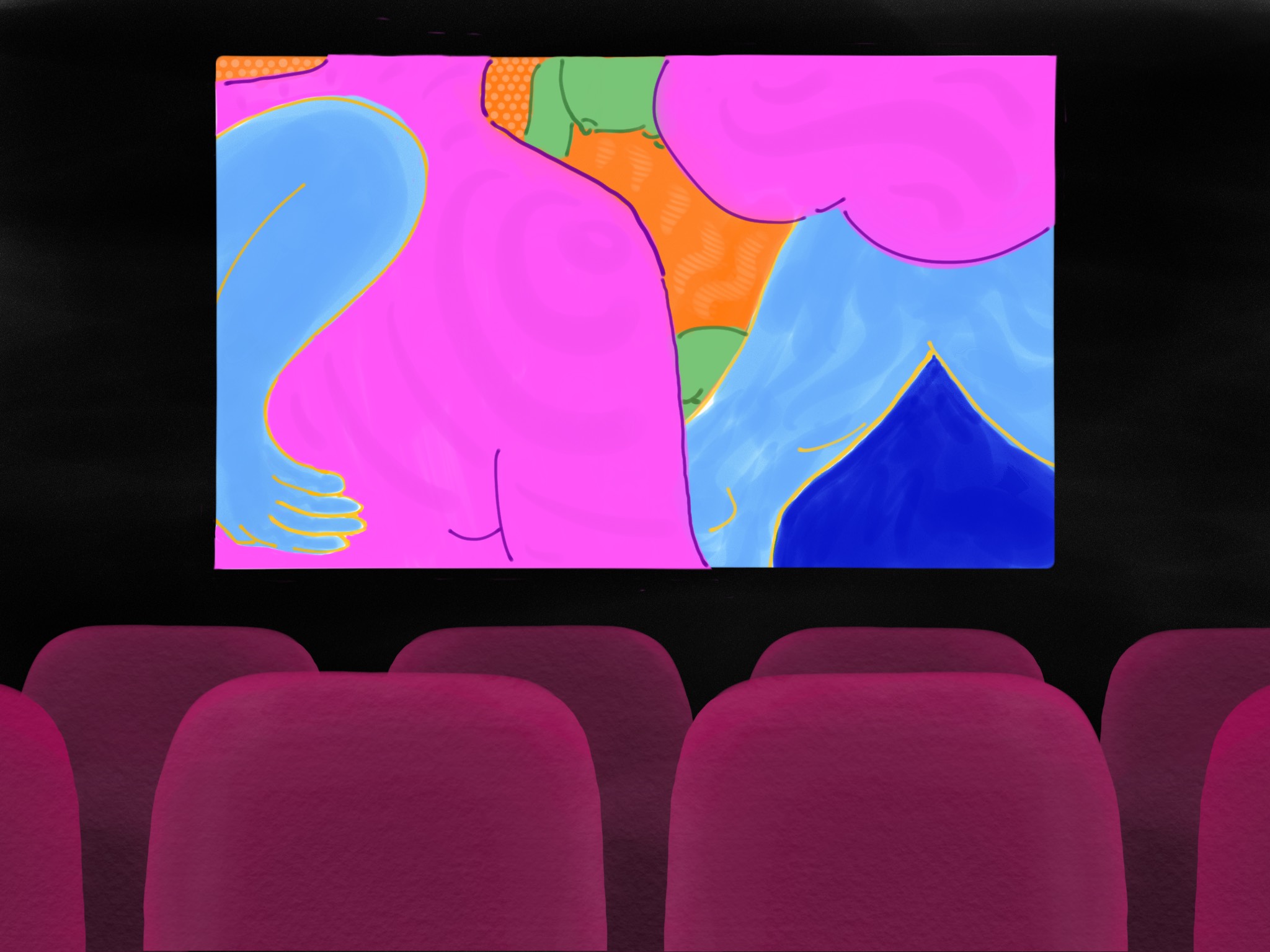On October 19, “LGBT Film Series – Dirty Looks: 8 Years On” took place at Never Apart, a local non-profit that promotes social change. The venue doubled as a bar, and glowed with color-changing bulbs and fairy lights. Upon entering the event, I felt intimidated. I was apprehensive about my own queerness, as I never felt a sense of belonging in the community.
Dirty Looks: 8 Years On is a queer short film program curated by Bradford Nordeen that, according to the Facebook event, “reassesses the past through a fiercely queer and politicized lens, [asking] ‘who brought us here?’ and ‘where are we now?’” The program is a collection of queer visual subjectivities, dating from 1966 to 2017, and sheds light on the ways in which the LGBTQ+ communities have articulated their identities over time. Nordeen introduced the event as a time-based exhibition designed to “illuminate queer histories and liminal spaces” through film. He also highlighted the importance of hosting Dirty Looks screenings in an informal setting in order to make these histories accessible to the general public.
The screen was illuminated with the image of the first short called Amphetamine, a dizzying portrayal of a drug-fueled sex gathering in the 1960s. Many of the films use vertigo-inducing camerawork, which gives the impression of an unfiltered perspective. One of the other films that stuck out was Frenzy. Reconstructed from Super 8 film camera negatives, the 1993 short depicts a concert by a Riot Grrrl band, where a lustful crowd takes turns performing oral sex on the lead singer.
Unfettered demonstrations of queerness remain inaccessible to individuals who are actively persecuted for their identities.
The compilation of films had an overarchingly raw, unfettered, and political aesthetic. The filmmakers took a clear approach in defining queer societies by emphasizing the elements of their identities that are most often persecuted and used as a tool to justify oppression. These elements include open AIDS discourse, extravagant dress, and explicit sexuality. Open displays of these parts of queerness is the first step to reclaiming them. In this way, we not only accept but also celebrate, queer culture. Expressly and unapologetically queer events like Dirty Looks both highlight traditionally-uncharted queer media, and unite communities via shared resolve. While Dirty Looks is a necessary platform in this way, there are other realities of queer life that are neglected and under-represented. However, overemphasis on certain aspects of queerness can also be a source of pressure on queer individuals. Drug consumption and erotic transgressions are a lived reality for many queer folks, and honest representations of this aspect of queer life is important. Nevertheless, Dirty Looks by and large depicted this reality to the exclusion of other parts of queer life. Pressures around failing to uphold this standard can lead to feelings of ostracization from the community, causing some to try to ‘prove’ their queerness in accordance with standards they cannot relate to.
Discussions of queer exclusion could also be extended further to encompass racial and colonial power dynamics. For instance, why were most of the films’ actors white? Why were the soundtracks exclusively English and Western in sound and style? Why were the films only in English? Could these observations reflect the ways in which queer pop culture has been constructed in line with overarching political interests? Representations are shaped by what larger systemic structures allow, and the shorts prompted important reflection on the broader frameworks of power in which LGBTQ+ communities are situated and operate. In this sense, what type of politicization are the Dirty Looks films articulating?
The filmmakers took a clear approach in defining queer societies by emphasizing the elements of their identities that are most often persecuted and used as a tool to justify oppression.
I commend Nordeen for making the decision to host Dirty Looks screenings in social spaces such as bars and restaurants. However, it must also be acknowledged that unfettered demonstrations of queerness remain inaccessible to individuals who are actively persecuted for their identities. Queer spaces that that inadvertently uphold this dynamic further the exclusionary practices the LGBTQ+ community aims to fight.
Although Dirty Looks is valuable in giving a platform to the queer community to express often ostracized parts of their identity, the representation it proposes is not all-encompassing. There are queer voices who do not identify with common depictions of queerness, often due to the complexities of their intersecting identities that they cannot see represented onscreen. Nordeen’s, ‘fiercely queer’ compilation of films should be reframed as a portrayal of a specific form of queerness, rather than a general mode of LGBTQ+ unification. Perhaps then the screenings would truly work to “undermine history,” as the event promised.

